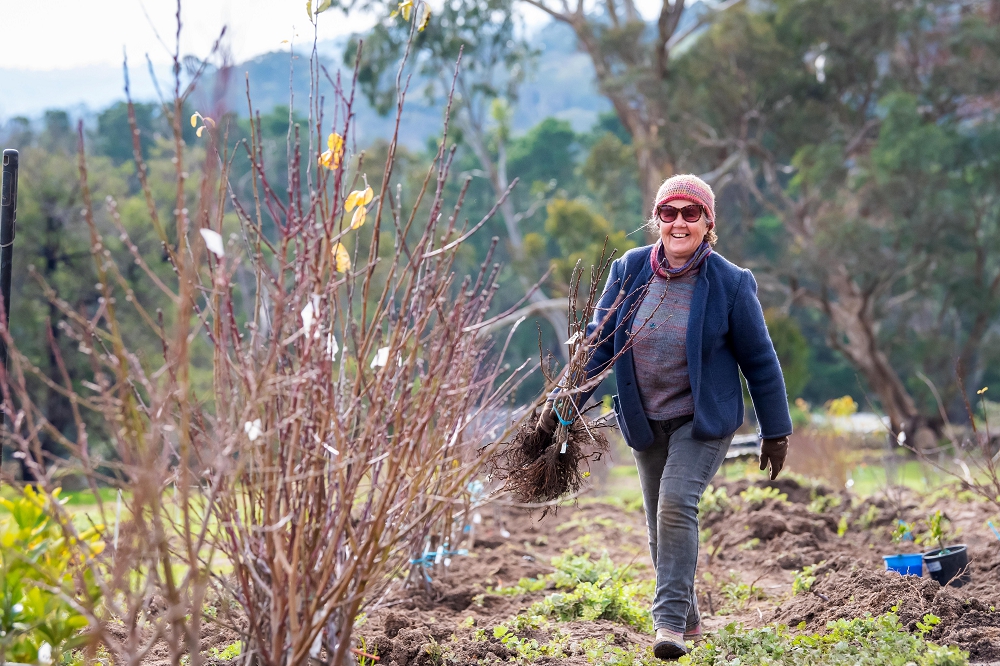
Carr’s Organic Fruit Tree Nursery at Harcourt is urging community members to ‘plant a fruit tree you’ve never heard of’ in a bid to save our heritage fruit varieties from extinction.
Carr’s Nursery’s Katie Finlay said there were hundreds of different apple varieties in the world, but many were on the brink of disappearing.
“If you go to the supermarket today to buy an apple, you’ll be really lucky if you find more than six or seven varieties. In a lot of shops there might only be three or four,” Katie explained.
“A lot of the older varieties only exist in collections, which is like keeping them in a museum. They need to be grown in people’s backyards, eaten, shared, talked about and loved so we can all get to know them again.”
Carr’s Nursery is a family business run by Katie, her sister Liz, and their dad Merv Carr, a nurseryman and orchardist with almost 70 years’ experience.
The nursery is a member of the Harcourt Organic Farming Co-op, which sits on Merv’s original orchard.
“We’re pretty sure we’re the only certified organic nursery in Victoria,” Katie said.
The nursery is building a collection of heritage and hard-to-find fruit tree varieties. This year they have almost 40 different varieties of apple trees for sale.
“That’s only a fraction of known varieties. There are literally hundreds of different apples in the world. We’d love it if the old varieties like Kidd’s Orange Red became household names!”
Katie and the nursery team feel a strong responsibility to bring back heritage apple varieties.
“Harcourt is one of the oldest apple districts in Australia, with the first trees planted in 1857. If we don’t all grow these varieties, they’ll disappear.
“Imagine having a Beauty of Bath, Belle de Boskoop, or a Brabrant Bellefleur in your garden. They’re worth planting for the names alone, but they also grow really delicious apples!” she said.
Katie said many of these apples also had lovely histories.
“One of the oldest apples in our collection is the Brabrant Bellefleur, named for their beautiful flowers. It was bred in the late 1700s in Flanders, and was so highly thought of as a cooking apple that it passed from gardener to gardener over the next hundred or so years. Eventually its quality was recognised when it won an Award of Merit from the Royal Horticultural Society in 1901,” Katie said.
“It’s a really pretty red and yellow apple, and it’s also firm and sweet, with an aromatic flavour. One of the best things about it is that it ripens really late in the season in May. It also keeps well for months after it’s picked.
“Sadly, Brabrant Bellefleur disappeared from commercial production in Europe by the 1940s, and now only exists in private collections.”
Planting a tree you haven’t heard of is not just about heritage apples. There are also some newer, Australian-bred varieties emerging that Katie maintains deserve a place in Aussie gardens.
One example is the Eagle Point Star, which was discovered as a seedling on the side of the road near Bairnsdale.
“The Eagle Point Star is special because it’s got dark purple skin and seeds, and the tree has gorgeous red leaves and purple flowers. The best thing is the colour of the flesh – when you cut the apple, it reveals this beautiful white flesh with a red star in the middle. They’re really a remarkable apple.”
Carr’s nursery is currently selling these rare varieties (plus many modern ones) until June 30 via openfoodnetwork.org.au.
Pre-ordered trees can be picked up at the nursery Open Days on July 2, 3, 9 and 10.







